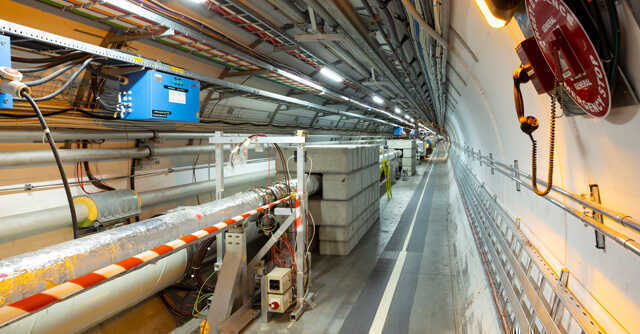
World’s largest particle collider resumes its quest to understand the universe’s origin


The Large Hadron Collider (LHC), the world’s largest particle collider, is set to resume operations later today, as it goes back into hunting for the most elementary particle of the universe – in effect trying to understand the very beginning of the universe. The iconic particle collider, housed in a 27 km-long circular tube placed 100 metres underground beneath Switzerland and France, will also reach higher energy levels than it has till date, in a bid to further break down the Higgs boson.
Created by the European Council for Nuclear Research (CERN), the LHC is a scientific instrument that seeks to understand the fundamental building blocks of the universe. The instrument is put to use under numerous scientific experiments, which seek to understand the conditions that led to the formation of the universe, how it expanded, the role that each particle played in its formation and subsequent expansion – and the eventual birth of life as we know it today.
It is during such quests that 10 years ago, two of CERN’s biggest projects, Atlas and the Compact Muon Solenoid (CMS) at LHC, discovered the Higgs boson. The latter is now accepted as one of the elementary particles in the Standard model of particle physics – which the upcoming LHC experiments will seek to break down.

To do this, the LHC will accelerate billions of beams of protons, less than 10 micron in thickness, through the collider. The collisions will create up to 13.6 trillion electronvolts of energy, which the scientists hope will help in observations pertaining to observing dark matter, and also understanding if the presently accepted elementary particles are truly fundamental – or may have further subatomic structures behind them.
Elementary particles are the fundamental building blocks of the universe, which no longer have further sub-structures that they are composed of. All other particles, which are composed of multiple elementary particles, are known as composites. The understanding and the study of elementary particles is critical in order to understand the circumstances at the origin of the universe, which makes LHC’s latest run critical.
The latest run will continue for four years through the LHC, following which in 2029, the collider will begin with its next generation project following an upgrade. While the present project has increased the number of collisions by 20x to create 1.6 billion proton-proton collisions every second, the next project will further increase collisions by a factor of 10, CERN said at its latest press conference earlier this week.

